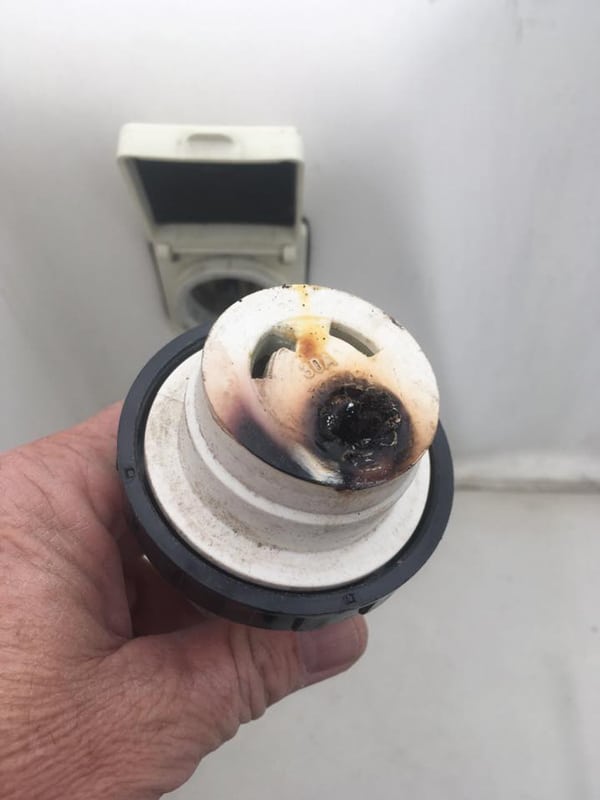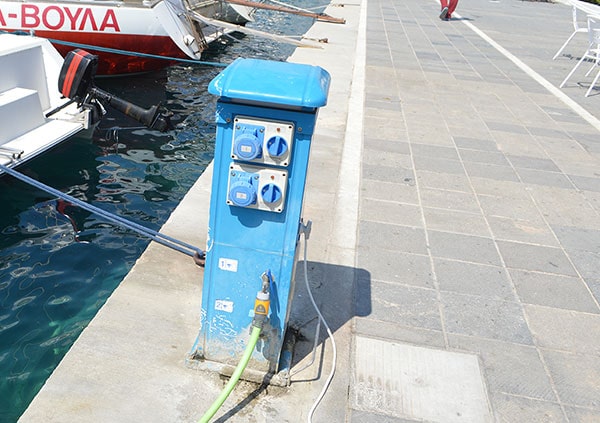
This article is an excerpt from NauticEd’s online Skipper Large Keelboats Course, a comprehensive online sailing course for beginner to intermediate sailors to learn how to sail large sailboats 26 ft (8m) and above. The Skipper Large Keelboats course is part of the Skipper Course Bundle of online courses, also teaching you how to master maneuvering under power and docking!
You can learn to sail and improve your sailing with NauticEd, the international leader in sailing education.
Shore Power Connection
One of the more common sources of fire on a boat is a loose connection of the shore power to the receptacle plug on the stern of the boat. Always make sure this is fitted tightly when leaving the vessel.
This is an image of a boat where the owner had no idea the constant shorting and sparking was taking place in his shore power cord L5-30 plug as his boat rocked with the waves in the marina each day. It would not have been long before his boat would have burned.

If you own a boat with the typical L5-30 plug, it is a good idea to upgrade to a Smart Plug. See this blog.
If you are not getting power to your boat via the shore power, check the circuit breaker panel box on the dock. Yes, there are circuit breakers there too.
Take care of the shore power cord after you have disconnected it from the boat. If it falls into the water you will trip the circuit breaker in the panel box on the dock. You probably will not be able to reset it because the water inside the plug will continually trip the breaker. Make sure there are some means to stow the cord so that no one accidentally (or purposefully (kids arhhh)) can knock it into the water.
The shore power cord should never dangle through the water on its way from the dock to the boat. If it does, the electric field in the water sets up an electrolysis reaction that tends to eat anything metal on your boat and surrounding boats.
A typical shore power pedestal looks like the one below. This one is 220 volts as the Picture was taken in Poros, Greece.

You can learn more in the Skipper Course....
Knowledge and theory for longer distances and overnight sailing in diverse conditions. The Skipper Course is a comprehensive online sailing course for beginner to intermediate sailors wanting to learn how to sail larger sailboats 26ft to 56ft. Or upgrade to the Skipper Course Bundle of online courses to also master maneuvering under power and docking!
